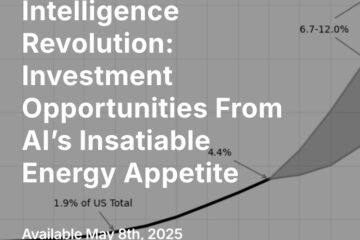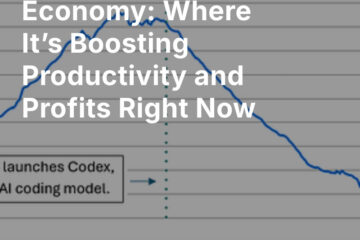The trajectory of markets in 2020 has been extraordinary and unexpected. Looking back, both the depth of the pandemic crash and the strength of the rally that has followed it make sense. They were the product, on the one hand, of severe lockdowns, economic closures, and uncertainty; and on the other, of the unprecedented fiscal and monetary responses from the world’s governments and central banks — responses that are ongoing, even as the pandemic gets closer to a resolution.
Obviously, on a technical basis, the market is high. Experience suggests that it will require a period of digestion before it proceeds to its next course. That could be a correction or a period of more or less volatile sideways consolidation. We don’t know when that will occur, nor does anyone else. There are many potential catalysts for a correction — from problems in vaccine rollouts, to political or geopolitical crises. We would regard such a correction as a buying opportunity — and not merely because of the vast monetary firepower being expended in support of global markets (though that is an undeniable reality).
The Market’s Pessimists
Among market analysts, and in particular among academic economists who address market events, there is the vocal presence of a particular school of pessimists. For these pessimists, current market levels are not just the sign of liquidity-driven exuberance that may briefly have gotten ahead of itself. Rather, they seem to believe that the market’s new highs are a sign that something has become unhinged and basically irrational in valuations. They often rehearse backward-looking data to show that we are now no longer living in a world in which equity market participants are rational capital allocators, but one in which equity markets are just systems of value extraction for speculators — not to say “gamblers.”
The flavor of this pessimism depends on who’s offering it. Often it’s based in macroeconomics. One familiar theme is the issue of productivity growth. Our regular readers will know that we’re deeply concerned about this theme — we often harp on the importance of productivity growth to overall GDP growth and to overall stock market appreciation. We also harp on the importance of technological development to productivity growth — something that’s not just important to stock market investors, but to anyone who likes to see the standard of living rising in their country.
The macro pessimists say that in spite of the development of the technologies that we’ve been mentioning throughout this pandemic year — mainly cloud computing and artificial intelligence and their related fields — productivity growth has been depressingly stagnant since the early noughts. That in turn has been related to overall stagnant wages and standard of living for a majority of U.S. workers, which has certainly been one factor contributing to an increasingly bitter polarization within the U.S. electorate.
In short, we see transformative technologies everywhere, but productivity growth peaking in about 2000 (in the developed economies), and declining thereafter.

Some pessimistic analysts believe that this stagnant productivity growth over the past two decades means that the new technologies of the “Fourth Industrial Revolution” — the core of which are networking and AI — are just never going to provide the productivity and growth “juice” that was provided by the initial entry of microcomputers into the economy.
We believe they are wrong — in fact, we believe they are very wrong. Here’s a simple observation: the first integrated circuit was built in 1958. The earliest commercial microcomputer was available in 1975. The productivity growth curve for the U.S. in the chart above begins its dramatic rise in about 1980. That’s a lag of more than two decades.
The computer, like steam power and electricity before it, is a “general purpose technology,” or GPT. GPTs are different from discrete inventions, since they completely transform businesses — and ultimately, societies. But they require the development not just of the core technology itself, but of a huge range of secondary technologies. Most importantly, they require basic changes in business culture and processes. All of these other changes are forms of “capital deepening” — investment in both tangible and intangible capital.
The path from the development of a steam engine, to a continent-wide network of rail transportation for freight and passengers, required enormous investment in tangible and intangible capital. The same was true for the electrification of the U.S. economy. The first practical electrical generators were built in the 1870s — but still, by the end of the First World War, half of American factories were not yet electrified.
During these long periods of preparation and intense capital development, an observer could point at the newly invented technology — steam, or electricity, or microcomputers — and say, “The invention is here — if it’s so great, why aren’t we seeing concrete benefits to productivity?” We believe the same thing has been happening with networking and AI. These are the GPTs that will drive the next big upswing in productivity.
This means also that investors who are focused on backward-looking data are going to miss the boat in a big way. All of the investments being made in the intangible capital that will enable the next big productivity burst are going to look like current waste from a backward-looking perspective.
These investments in subsidiary technologies and in business transformation are going to depress the apparent earnings yield of the companies that are making them. (That means they will raise the apparent price-to-earnings ratio, since earnings yields and P/E ratios are reciprocals.)
On the whole, companies that are making investments to allow them to reap the rewards of the next industrial revolution will appear to be persistently “overvalued” from a backward-looking framework — and indeed, even from a forward-looking framework that does not take the full potential of these technologies into account.
This is why academic valuation techniques, such as Robert Shiller’s CAPE ratio, seem to have completely decoupled from the valuations that those with skin in the game — investors, venture capitalists, and other actual market participants — are willing to pay. Mr Shiller recently rejiggered the CAPE ratio to include the equity risk premium, and the new model shows the market being less extremely overvalued — but the problem goes beyond the effects of artificially low interest rates. It is related to deeper problems with academic valuation methods and macroeconomic measurement techniques.
As the saying goes, “The tape tells all.” What the academics don’t know, traders and investors do know, and in this case, we believe they are seeing a reality that has not yet come into focus for the big-thinking economists and pundits.
Investment implications: Investors who want to set themselves up to benefit from the productivity surge that will accompany the Fourth Industrial Revolution should look in particular for companies that are engaged in the kind of capital deepening that will enable them to benefit the most when the transformation begins a period of dramatic acceleration. That acceleration has been given a new impetus by the covid pandemic.
“Capital deepening” includes the development of both technological and operational infrastructure — both tangible and intangible capital. Companies that are in the forefront of developing the tangible infrastructure are obvious choices (including many of the hardware and software leaders in our favored areas, including the cloud, the internet of things, software, 5G, next-gen semis, telepresencing technologies and platforms, tech-focused healthcare, e-commerce, financial technology, electronic entertainment, and cybersecurity).
Investors should not overlook companies that are developing peripheral enabling technologies, nor old-line businesses that are embracing deep transformation in the ways their businesses are run. In this regard, knowledge of their management teams, philosophy, ambitions, and execution can allow real research to stand out from the crowd and the index — even if everything you hear is also available to other investors who are not really listening to it. This is the way to find long-term outperformance in an era of technological transformation. Staid, old-line companies that are uninterested in and unwilling to change will at best offer stagnant returns.
Investors should be careful in using backward-looking valuation methodologies. These methodologies often do not accurately reflect the likely future value of companies’ current investments in tangible and intangible capital — especially as related to a fundamental technological revolution that is playing out over a multi-decade period.



